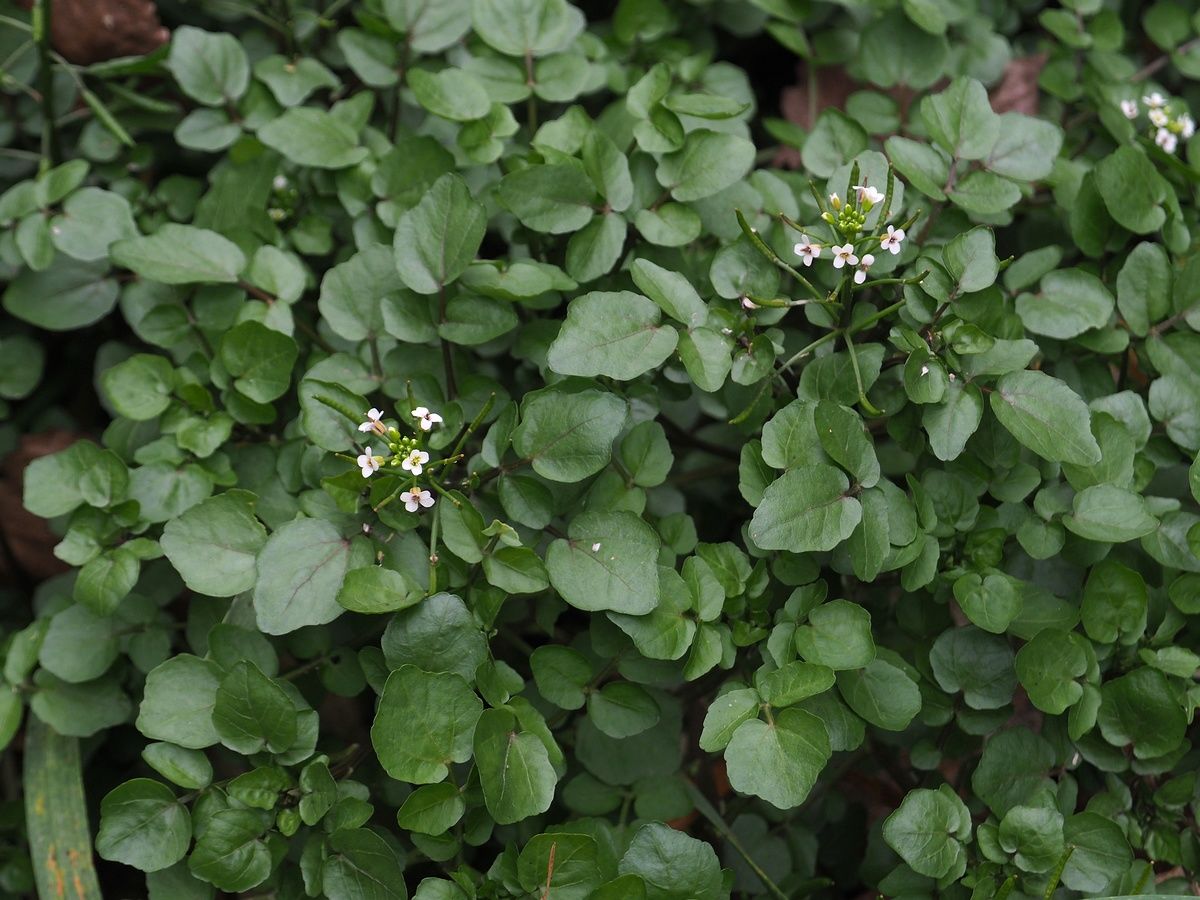Other Names: Brooklime, Brown Cress, Cress, Cresson, Nasturtium, Water Cresses, True Watercress.
Parts Used:
-
Root
-
Leaves (culinary and medicinal)
Habitat:
Watercress is a fast-growing, perennial aquatic herb commonly found in cool, running water such as springs, shallow brooks, and spring-fed streams. Though its native origin is debated, it is widespread in Europe, Central Asia, and naturalized in many other regions.
Description:
Watercress is distinct among mustard family plants due to its:
-
Pinnately compound leaves with 3–11 shiny, dark green, oval leaflets.
-
Creeping or floating stems with fibrous roots that anchor at submerged nodes.
-
Small white flowers with four petals, blooming from April to June in racemes.
Caution: Avoid wild plants growing in water contaminated by animal waste, especially where sheep graze, as it may harbor the liver fluke parasite (Fasciola hepatica). Cooking the plant makes it safe for consumption.
Nutritional and Medicinal Profile:
Watercress belongs to the Brassicaceae (cabbage) family and is a close relative of mustard, radish, and garden cress. It’s among the oldest known leafy vegetables consumed by humans.
-
Rich in: Vitamins A, C, iron, calcium, iodine, phosphorus, and folic acid.
-
Flavor: Mildly hot, peppery, and tangy.
-
Uses: Eaten fresh in salads, sandwiches, or cooked as a potherb. Seeds can be ground into mustard.
Biochemistry:
Contains:
-
Amino acids: Arginine, Aspartic acid, Glutamic acid, Glycine, Histidine, Isoleucine, Lysine, Methionine, Threonine, Tryptophan, Tyrosine, Valine.
-
Vitamins and Compounds: Beta-carotene, Biotin, Folacin, Pantoic acid.
-
Phytochemicals and Antioxidants
This nutrient profile contributes to its use as:
-
Antiscorbutic (prevents scurvy)
-
Depurative (detoxifying)
-
Diuretic
-
Expectorant
-
Purgative
-
Stimulant
-
Digestive aid
-
Cancer-protective agent
Traditional & Therapeutic Uses:
Historically:
-
Greek and Persian soldiers consumed watercress for stamina and health.
-
Ancient Greeks believed “Eating cress makes one witty.”
Modern Herbal Uses:
-
Internal:
-
Boosts immunity against lung, larynx, esophagus, prostate, bladder, uterus, stomach, and intestinal cancers
-
Supports bronchitis, colds, sinusitis, and liver or kidney fatigue
-
Helps relieve winter colds and flu
-
-
External:
-
Applied as a lotion or poultice to treat skin irritations, blotches, and blemishes
-
Used as a hair tonic for promoting thick, healthy hair
-
Health Benefits:
-
Powerful antioxidant effects
-
Antiangiogenic properties (inhibits blood vessel formation in tumors)
-
Rich source of vitamins and minerals
-
Cancer-protective potential
-
Digestive support and detoxification
Summary:
Watercress is more than a peppery salad green — it’s a historical superfood with a diverse range of nutritional and medicinal benefits. From treating respiratory issues to supporting skin health and potentially protecting against cancer, this aquatic plant deserves a regular spot in both your kitchen and natural medicine cabinet.
Speech Disorder
A speech disorder, also known as a speech impairment...
ADHD
Attention-deficit / hyperactivity disorder (ADHD) is a...
Cerebral Palsy(CP)
Cerebral palsy (CP) is a group of neurological disorders...
Cancer
Cancer is a broad term for diseases where cells...




